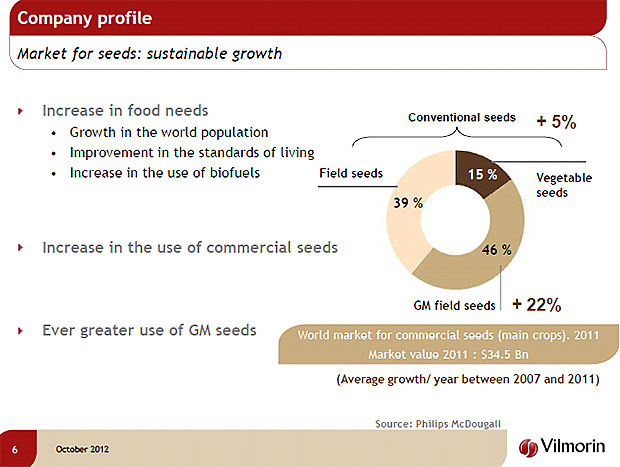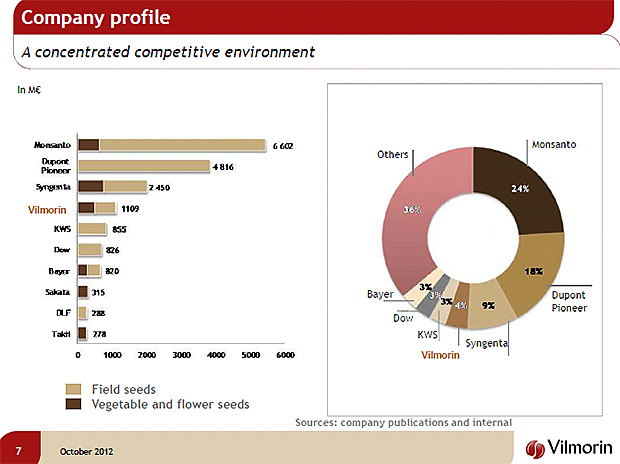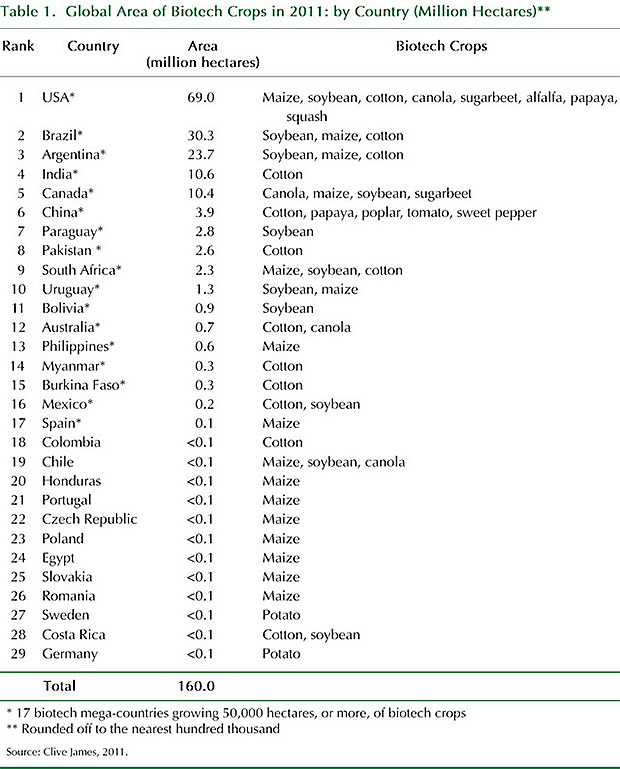The 2012 FAO report “Investing in Agriculture for a Better Future” provides uswith the opportunity tomake some observations on how this specific sector can be an investment option uncorrelated to the financialmarkets. In aworld searching for investments in non-traditional assets, investment in agriculture is also an effective instrument for economic growth which at the same time yields a strategy useful in the search of a sustainable development model associated with the reduction of global food imbalances through the use of newfarming techniques and instruments.
The areas in the world where the agricultural capital stock per worker and the public spending on agriculture are stagnating or have declined over the last three decades are generally the epicenter of this imbalance.
The recent food shortage crisis and increasing concerns about global climate changes have raised the agri-food stuffs issue to the top of the international food agenda. Governments and supranational organizations have recognized the convergence of the objective of reducing the differences in the availability of food and the need to create a sustainable agricultural system. Achieving these goalswill require a significant increase in investments in agriculture and their quality.
The nation-states – even if existing resources are not independently able to meet the needs for investment in agriculture – and the “donors” (supranational agencies) around theworld play a crucial role in catalyzing and channeling investments in agriculture. But it is the private investors, in this case the farmers themselves, who too often act in the absence of a domestic and international network that should be at the heart of any investment strategy for the sector.
The players in the agri-food sector can be classified as foreign or domestic, and alternatively as public or private. The principle source of investment capital is generally derived fromprivate domestic investors followed by domestic public organizations. Often, however, in countrieswith lowincome per capita like South Asia and sub-Saharan Africa (according to the 2012 World Bank report), the most concrete source of support are from the farmers themselves. These are followed by foreign investments, public development assistance and direct private supranational investments.
All these operators – public and private, domestic and foreign – invest in different projects, oftenwithout any coordination between them, andwith different objectives that are generally not interchangeable. Unfortunately, government intervention is essential and fundamental to the sector, in particular to address and incentivize private action. Public agricultural policymust have the objective of attracting private investorswhom we all know will invest in this sector, as they do in others, only if the returns outweigh the perceived risks, if they exceed the expected returns from other forms of alternative investments, or if these are considered uncorrelated to the performance of other asset classes.
The ultimate aim of public intervention must be to increase agricultural productivity and to achieve some targets: economic growth and the reduction of poverty, food security and enhancing environmental sustainability.
In order to achieve this, focus must be placed on research, on the infrastructure necessary for the development of a network, and the creation of efficient trading markets.
Agricultural production follows natural cycles and is subject to phenomena like droughts, pest attacks, or various diseases to crops, without considering the problem of geographic dislocation of producers and the perishable nature of their products in connection with the networks that allowthemto reach themarkets.
All these factors make the investment risky and highly dependent on the existence of rural infrastructure and liquid openmarkets. It follows that only adequate public investment can reduce the risk and increase the expected profitability by making the sector not only socially attractive but also economically viable.
Agricultural productivity growth is necessary – but not sufficient – in order to achieve social sustainability.
Agricultural production will need to cater to more than nine billion people in 2050, about two billion more than today.Most of the population growthwill be in countries where there are currently serious food and social imbalances.The increase in demandwill result in the supply of agricultural products at increasing costs and, given the lack of new arable land, productivity and the number of crops in developing countries
(which have arable land)must increase. Hence, it becomes necessary to use fewer resources, increasing their productivity and improving the quality.
The increasing food requirements could be satisfied by producers able to use biotechnologicallymodified flora to make it grow quicker, with higher productivity levels, necessitating less space and water, and able to withstand adverse weather conditions. This trend has now been in place for several years.
The growing trend of geneticallymodified crops is confirmed in the 2011 report of the International Service for the Acquisition of Agri-biotechnology Applicationswhich shows how“biotech crops reached 160million hectares, up 12 million hectares on 8% growth, from2010, as the global population reached a historical milestone of 7 billion on October 31, 2011.” The report continues: “The most compelling and credible testimony to biotech crops is that during the 16 year period 1996 to 2011,millions of farmers in 29 countriesworldwide, elected to make more than 100 million independent decisions to plant and replant an accumulated hectarage of more than 1.25 billion hectares – an area 25%larger thanthe total landmass of theUS orChina – there is one principal and overwhelming reasonthat underpins the trust and confidence of risk-averse farmers in biotechnology – biotech crops deliver substantial, and sustainable, socio-economic and environmental benefits. The 2011 study conducted in Europe confirmed that biotech crops are safe as animal feed.”
The seed market is currently worth about $34.5 billion, ofwhich the GMOrepresents 46%or $15.9 billion with an annual growth of 22% compared with 5% of traditional seeds. It is estimated that the GMO will have the largest market share within the next three years.These numbers are impressive considering that it is estimated that on average GMOcrops have an annual production increase of 10%-15% compared to traditional cultivation.
The major producers are primarily American and Swiss companies. Monsanto, the US multinational, alone accounts for about a quarter of themarket.
The farmers, many of whom live in low- and middle-income per capita countries, do not have the sufficient resources tomeet their goals of increased productivity and do not have the possibility of accessing the genetic technologies fromthemultinationals.
It is still necessary to encourage farmers to exploit their territories because, even if agricultural productivity is growing due to the use ofGMO, it is not enough to satisfy the global food demand considering that the development of biofuels is absorbing a significant share of the production.
Incentives, with relative constraints, to influence the investment decisions of the farmers are needed to stimulate private interventions. Governments must have the ability through their interventions, among others to: create a favorable investment climate in order to catalyze private resources in social and responsible investments; direct government spending towards essential infrastructure; overcome the constraints that small landowners face in terms of savings and especially credit/investments; and regulate private investments (multinationals), especially those on a large scale, in order to ensure social cohesion, equity and environmental sustainability.
Governments play a key role in the process as they are responsible for the legislative policy intervention (for example, in Italy GMOs are banned) and the creation of what is necessary for an efficientmarket (e.g., infrastructure). It is crucial to create the expectations and the perception of profitability associated with a normalized level of risk to push individual farmers, farms and private investors to work in human resources along with research and development.
The public investor receives a higher social payoffwhen capital is concentrated in the provision of public goods, such as agricultural research, rural infrastructure and education, rather than to direct subsidies on products (such as fertilizers and water). The creation of effective producer organizations would help to overcome the credit and agricultural culture constraints and the risk aversion which are other key challenges facing the small operators. Finally, it would be necessary to conduct an in-depth analysis of the use of the patents owned by themultinationals and theirmaturity in order to allow the dissemination of know-how as it occurs in other industries, such as pharmaceuticals.
Everything must be done systematically but in a strictly controlledmanner in order to unequivocally demonstrate that chemical research and its applications (such as the genetic modification) maywell be reconciledwith natural processes and cycles without creating nappropriate uses of technology and avoid any repercussions on the health of end consumers.
Science, progress, natural rhythms and biological factors can be harmoniously merged in sustainable agriculture. A systemmust be created inwhich its agricultural processes are more productive, its natural ecosystems protected, and farmers rewarded for services that generate added value.
This theme also opens up a serious ethical debate on the use of these scientific discoveries that give rise to a series of conscientious and religious evaluations whichmust be left to each individual.
Agriculture as a social investment, a sustainable and ethical economic development. One area that is showing how its development brings with it not only the value of production in an absolute sense, but also specific values fromwhich the whole of society benefits and that the secondary and tertiary sectors fail to provide. I refer to (but do not limitmyself to) the social value of the non-profit activities and cooperatives that have found in agriculture, over the years, their model of development not viable elsewhere or in the (re)introduction of people not economically viable in the other two sectors.
There has been a reconsideration of agriculture as an essential part of the economic systemand of global development but linked to the creation of a model closely related to regional sustainability. Outlined as such, it is possible to quantify the importance of the agricultural sector in the same regards (today if not higher) as the other two traditional sectors given its multiple implications in social and growth processes.
Conditions for an efficientmarket productionmust be created in order to prevent imbalances in economic performance, often to the exclusive benefit of the distributors, penalizing the quality and the quantity of production to the detriment of the original producers and especially of the end consumers or the citizens of the world.
In the context of global population growth and an increase in the use of agricultural components for global sustenance and for sustainable development (e.g., biofuels), supranational authoritieswill have the delicate task of devising togetherwith national leaders an ecosystem based on the creation of a better nutritional balance and on the consolidation of research in the field of GMO in order to keep new technologies from creating instability in non-agricultural sectors and address the difficulties of the ethical interpretation of the future of certain population groups.
DOWNLOAD HERE: The world’s food Map
DOWNLOAD HERE: Original Article published on Longitude 24 # 2013


